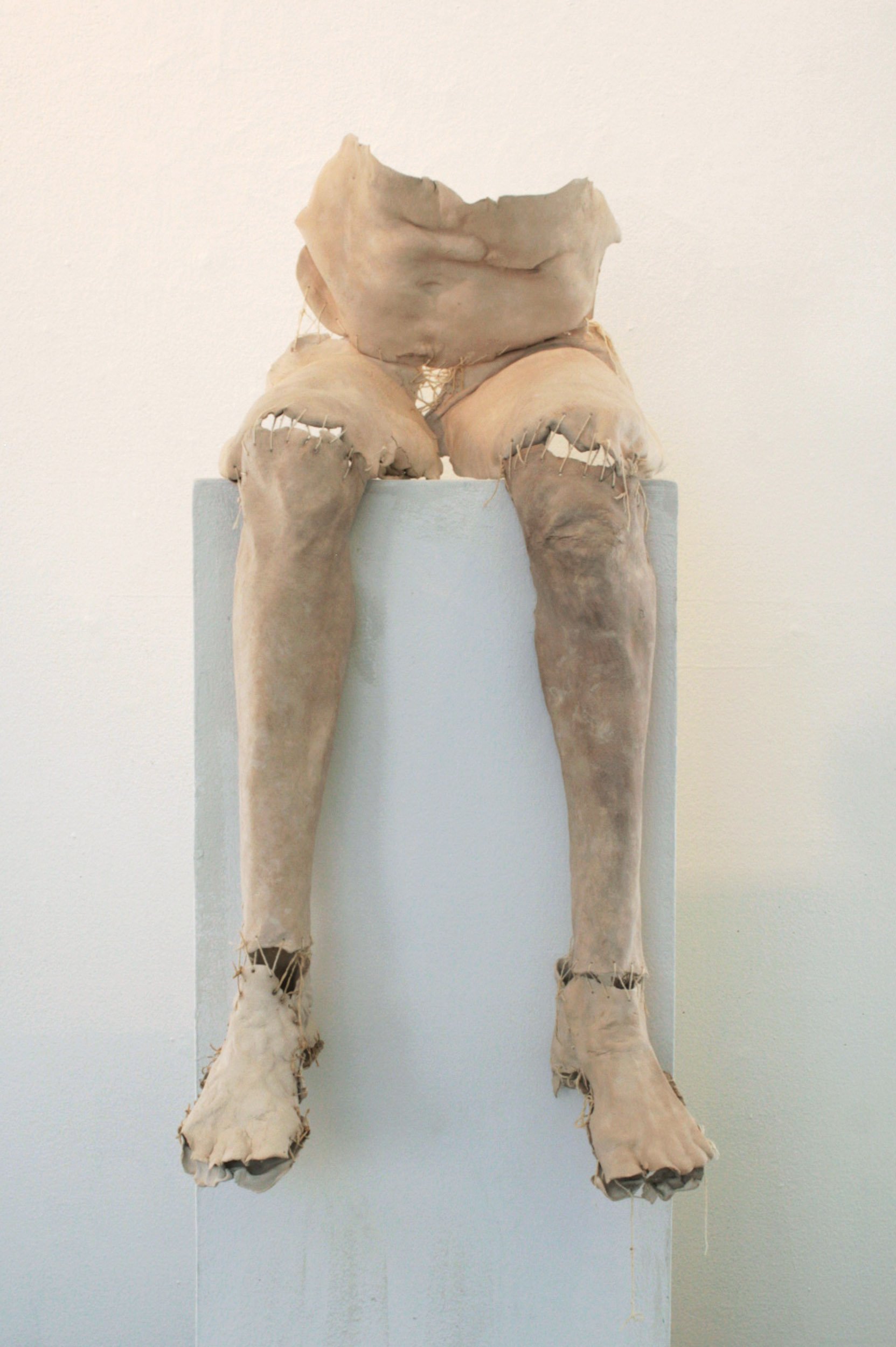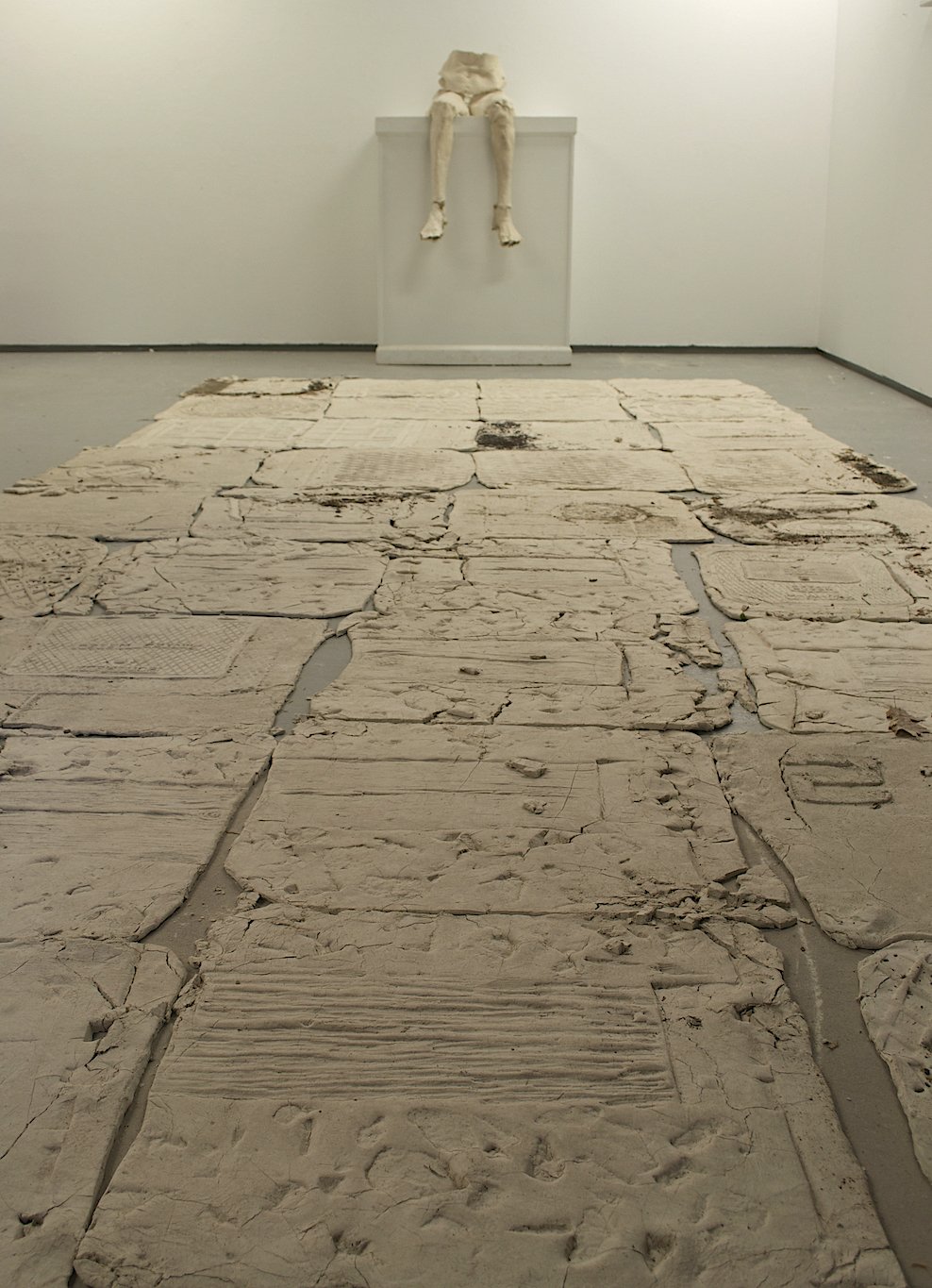The Devil’s Beating His Wife
Ride along the levee, the surest route
First a flood, then a drought.
Living in Louisiana one cannot escape water—the ground is soft with it, the air thick with it. Water here is at once an affirmation and a threat. This work was created in the midst of a recent struggle with bipolar disorder. Taking water as our vital life force, I have been thinking about inner climates of flood and drought.
Alongside feelings of instability is a wariness of objects—the material things that anchor our lives and seduce us with a false sense of permanence—and ultimately, a hesitation towards my own role as maker. Can a compulsion to document and collect be simultaneously celebrated and challenged?
The simple act of pressing clay onto the nouns of my surroundings requires a degree of physical engagement that offers a needed sense of participation. And yet, while clay is the material through which I connect, it is also an embodiment of the space between, a cast of the unbridgeable gap.
Having registered moments with my own body and the ground beneath it, the clay is then left to dry, in its most fragile state. Without water, these documents are nothing more than compacted dust tenuously held together. As they shift and crumble, the idea of an undercurrent—the water’s power to revitalize and obliterate—is never far off.
I recently learned that in parts of the south when it is sunny and showering at the same time they say, ‘”the devil is beating his wife.” As I find myself navigating landscapes of drought or flood, I have become increasingly taken by the phrase, and the idea that rain and sun could coexist.


